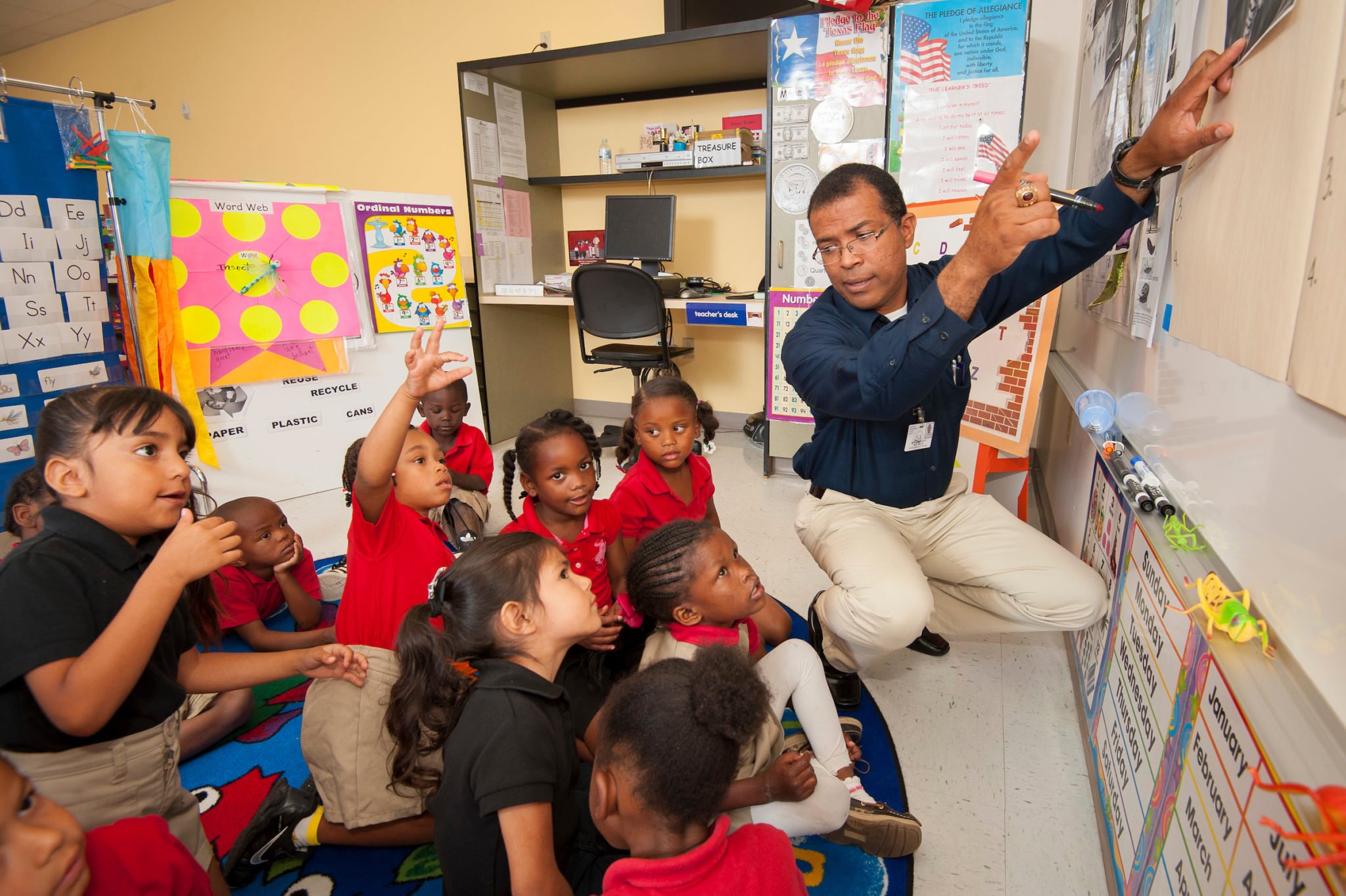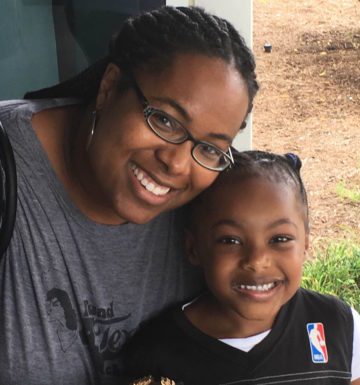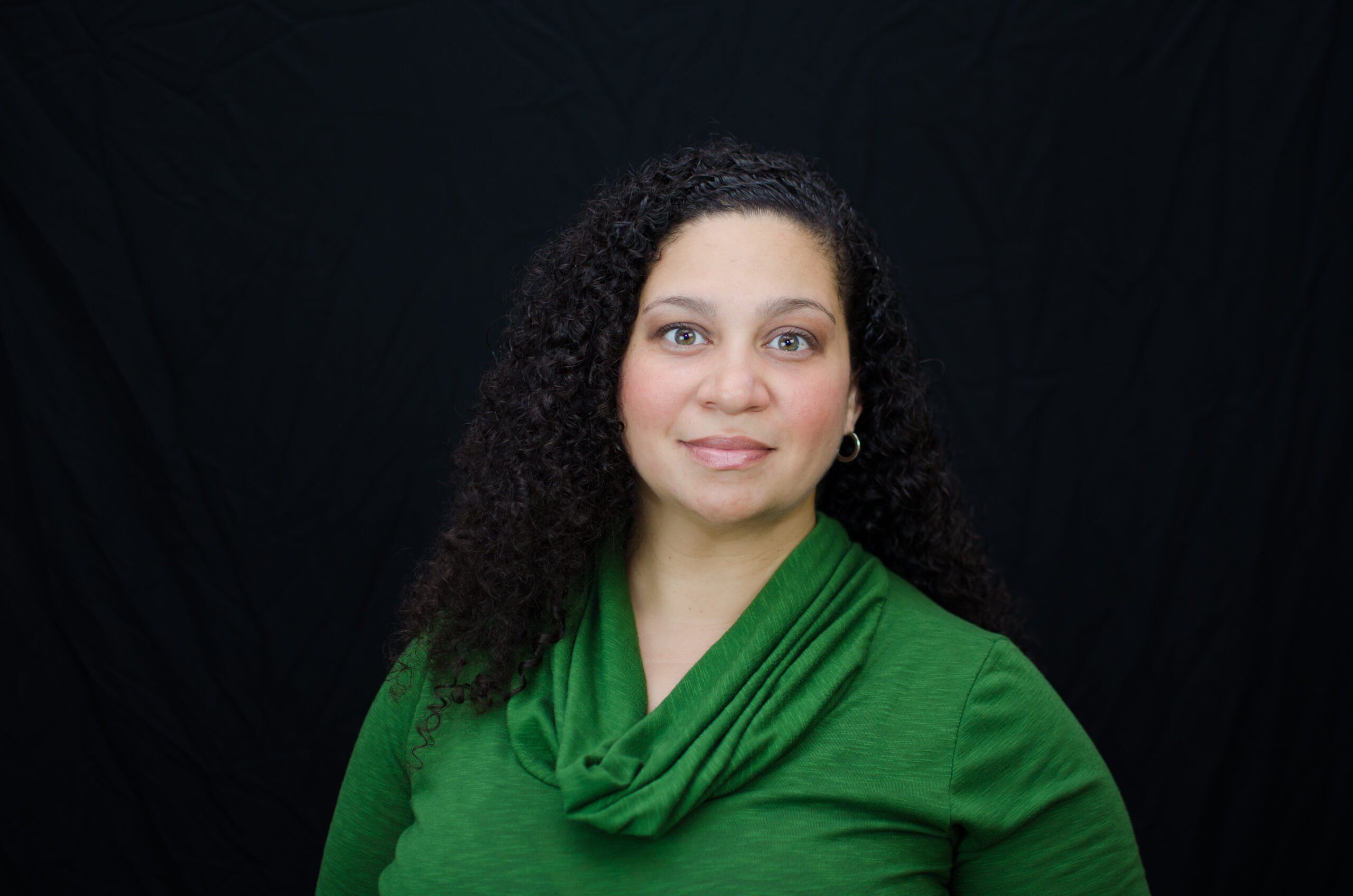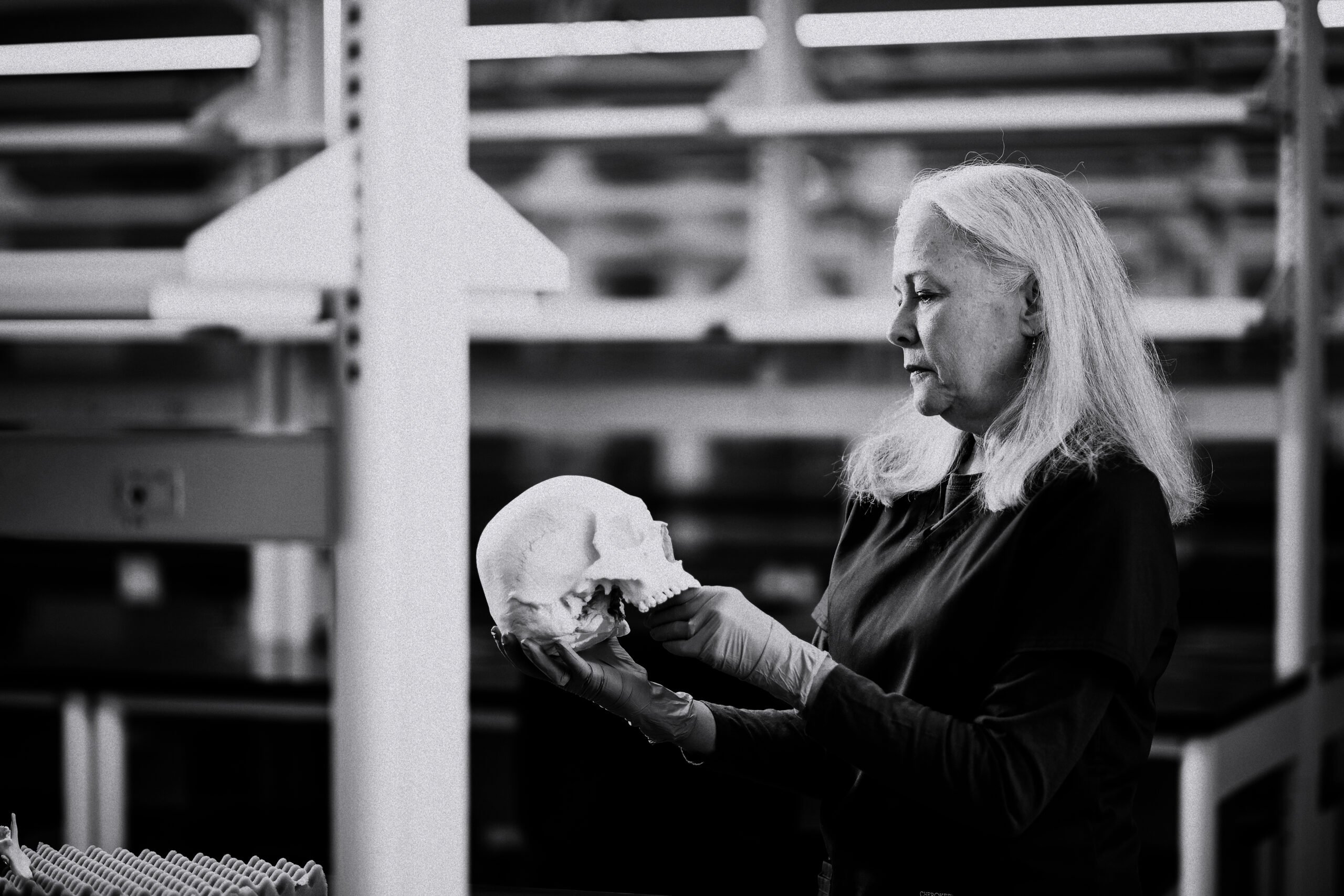
A Single Mom’s Search for ‘School Choice’ in Texas
Finding a good elementary school in Houston is easy — if you live in the right neighborhood, or can take on a school search as a full-time job.
Never did I think I would find myself sitting in the lobby of an elite Presbyterian private school in Houston’s Museum District with my 4-year-old taking an admissions test down the hall. But there I was, in late January, hoping that my daughter was sufficiently prepared. Later that day, she said she’d spent the morning playing with puzzles and drawing for the test while, down the hall, I finished reading for my graduate class on multiculturalism in public health.
So much had happened between giving birth to my daughter and finding myself in that moment, in that school, on that day. I’m a black single mother who left a tumultuous relationship shortly after my child was born in Washington, D.C. We moved to Arlington, Texas, for a year before settling down in Houston. My daughter was not yet 2 when we moved here, but I already knew that finding a school for her would be a battle.
I was fortunate. I worked at the University of Houston while attending school, so I could enroll her in the on-campus Children’s Learning Centers. There she received a wonderful early-childhood and Spanish immersion education, and I began collecting the social capital I would later need in the school selection process.
According to school rankings published by Children at Risk, a Texas-based nonprofit, our neighborhood elementary school was underperforming. Only around 3 percent of the students were identified as gifted, which raised concerns about the type of gifted and talented educational opportunities that my child could receive. The school also received a Texas Education Agency rating of “improvement required.” Of the 314 students enrolled in pre-kindergarten through fifth grade, 75 percent are considered at risk of dropping out. This was not the environment I wanted for my child. Looking for alternatives, I first considered magnet schools, and then private schools.
I worried that the lobbying power of testing corporations meant that my child would be seen as just another dollar sign.
But I’ve always cared very deeply about education and holding space in institutions that were not necessarily built for people like me.
The more familiar I grew with the ins and outs of the Houston ISD magnet application process, the more upset I became about the state of public education in Texas. High-stakes testing and the many failures of No Child Left Behind made me skeptical that my child would receive a well-rounded education in public school. Too much attention is devoted to the STAAR test, which determines school rankings, funding, teacher pay, and whether children are promoted to the next grade or can graduate.
I worried that the lobbying power of testing corporations meant that my child would be seen as just another dollar sign. The final straw came when I stumbled upon testing opt-out groups on social media. From them, I learned that children had been barred from sharing testing details with their parents, and that parents and teachers aren’t allowed to see the STAAR content and results. (As of the 2016 school year, that has changed.)
I do not wish to be a part of that system, or leave my child’s education at the mercy of it. I was inspired by parents who stood up to their school districts and opted their children out of statewide assessments. And yet, I worried that this wouldn’t be enough. What about the rest of the school year, and the threat to curricula that STAAR poses?
Houston ISD has a plethora of magnet options, but only a small number of those offer high-performing, quality educational programs. For some of these schools — River Oaks or T.H. Rogers — the sheer number of applicants makes it statistically less likely for a primary-school student to gain admission than for a graduating senior to be accepted to Harvard.
I support public education, but I had to be honest with myself: The odds weren’t good that my daughter would get in at any of our top magnet choices. I began to consider private schools out of necessity.
Even though it meant stretching the limit of my credit card, I wanted to prepare her for an exam that, historically, has identified only a small percentage of black students as “gifted.”
It was a really draining process, both financially and emotionally. I often wonder which opportunities my daughter may be missing because she doesn’t have two parents who can juggle the costs and responsibilities of raising a child. But even though it meant stretching the limit of my credit card, I wanted to prepare her for an exam that, historically, has identified only a small percentage of black students as “gifted.”
I applied to 10 magnet schools — the maximum that HISD allows. My child tested gifted (best $300 I ever spent!) but we were put on waiting lists at all of them. Meanwhile, we were wait-listed at one of the Protestant schools and accepted at three private schools. The Catholic school was affordable, ethnically diverse, and offered a smidgen of financial assistance. It also offers Spanish, and students are accepted into a variety of rigorous Catholic, Protestant, non-parochial and public high schools.

I’m as surprised as anyone that I ultimately chose a Catholic school, though probably not as surprised as the mother I was four years ago would have been. I’m a strong supporter of reproductive justice and serve on the board of directors for Fund Texas Choice, a support organization working to erase barriers to abortion access for Texans. Although I’m a Christian, I sometimes disagree with the Catholic Church. I also have several Catholic friends who, though we disagree on abortion, are very invested in social justice. Some of the only white people I feel comfortable talking to about white privilege, oppression and racial justice also happen to be Catholic.
While I’m hopeful that my child will learn to think critically and solve problems, I worry about the messages she’ll receive about her body, gender and sexuality. But those same concerns would apply to any public school in abstinence-only Texas.
I’m fortunate that I have loved ones who stepped up to help me put together my daughter’s tuition — $8,400 annually, plus before- and after-school care, school lunch, supplies and uniforms.
There are those who will say I should have moved to another part of Houston, or a suburb, to attend a zoned public school. I might have, if I’d had the money to go to a month-to-month lease while we waited on admissions decisions and I finished my graduate degree. But there’s no guarantee my concerns about class size, developmentally appropriate instruction, adequate recess time, fine arts and music would have been assuaged in another local public school.
I don’t believe public dollars should go to religiously affiliated schools. Even if vouchers were available for my use, I would not have utilized them.
That doesn’t make me an advocate for what many conservatives tout as “school choice.”
On the lips of lawmakers and lobbyists, “school choice” is a cover for ideas that serve to funnel money to the private corporations that often operate charter schools. These schools do little to lift up the families most in need: those with parents who can’t afford to make a second full-time job out of a school search. Charter schools also administer STAAR, and they’re hardly exempt from scandal. To me, they are not a cure-all for a broken public education system.
And then there are school vouchers, which benefit the few while doing nothing to solve broader educational inequities. I don’t believe public dollars should go to religiously affiliated schools. Even if vouchers were available for my use, I would not have utilized them.
My daughter started kindergarten in August and is enjoying her new school. It’s still early, but we’re both pleased with our experience.
This is what school choice — or lack thereof — has looked like for my family. It was a long, difficult, and expensive process that wouldn’t be any better, or easier, for any but the most privileged families if conservative education policies are made into law. From day one, it was up to me to find an alternative for my child so she wouldn’t be left behind.
[Featured image courtesy of Houston Independent School District.]


